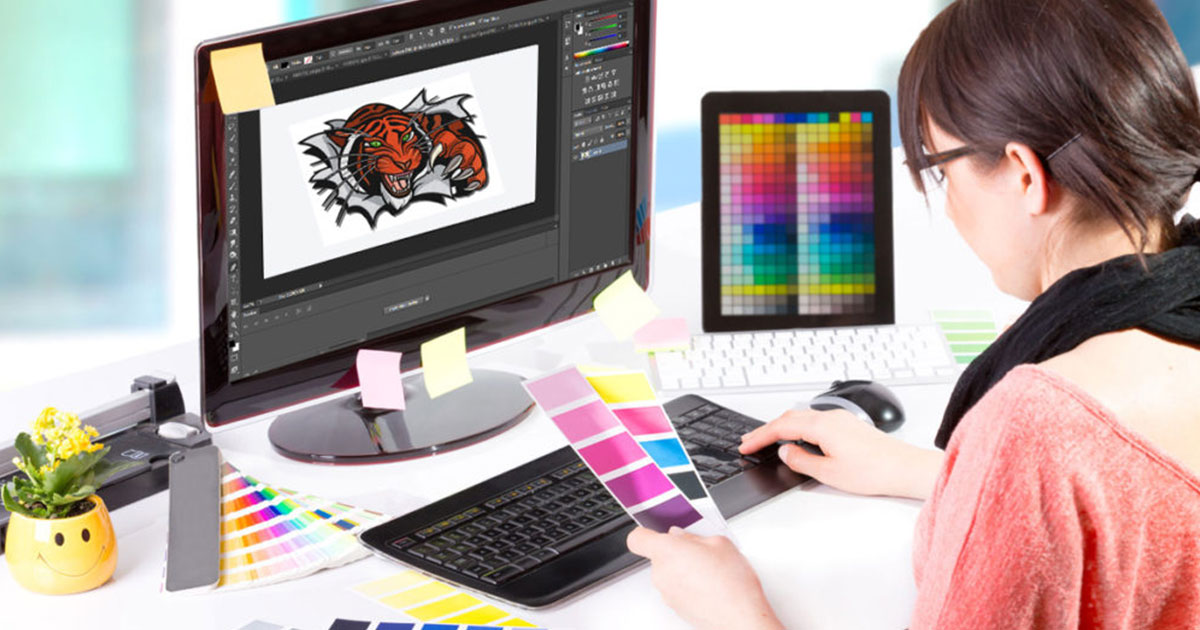Custom-made Digitizing for Embroidery: Customized to Your Requirements
Custom-made Digitizing for Embroidery: Customized to Your Requirements
Blog Article
Grasping the Needlework Digitizing Process: Your Ultimate Overview
Needlework digitizing is a thorough craft that needs accuracy and know-how to translate complex layouts into digital layouts for machine embroidery. As craftsmens start this journey to understand the embroidery digitizing process, an extensive understanding of the fundamentals establishes the structure for quality. However, beyond the primary knowledge exists a realm of sophisticated software program, specialized tools, and nuanced methods waiting to be discovered. By diving right into the subtleties of digitizing, one can open a globe of creative possibilities and raise their embroidery jobs to brand-new elevations.

Recognizing Needlework Digitizing Essentials
Needlework digitizing essentials create the structure upon which intricate styles are equated into machine-readable styles for accurate stitching. This preliminary step in the embroidery digitizing process is essential for guaranteeing that the final embroidered product is a faithful depiction of the initial layout. Recognizing needlework digitizing fundamentals includes understanding essential concepts such as stitch kinds, sew instructions, density, rug, and pull compensation.
Stitch kinds play an essential duty in figuring out the visual and textural outcome of the stitched layout. By choosing the suitable stitch type, whether it be satin, fill, or running stitch, digitizers can attain the preferred impact and enhance the overall high quality of the embroidery. In addition, sew direction influences the circulation and dimension of the layout, while thickness figures out the spacing and protection of the stitches.
Additionally, underlay stitching supplies stability to the layout by protecting the material and preventing distortion throughout the embroidery process. Draw compensation is an additional necessary consideration to neutralize the all-natural propensity of material to agreement when stitched. Understanding these embroidery digitizing essentials is essential for developing professional-quality embroidered items.
Picking the Right Digitizing Software
Choosing the suitable digitizing software program is a crucial choice that significantly impacts the effectiveness and top quality of the embroidery digitizing procedure. Digitizing for Embroidery. When choosing the best digitizing software program, it is necessary to think about aspects such as the complexity of layouts you intend to create, the user-friendliness of the software, the level of client assistance used, and the compatibility with your needlework equipment
There are various digitizing software options available in the marketplace, ranging from fundamental programs for novices to sophisticated software application for expert digitizers. this page Some prominent options consist of Wilcom EmbroideryStudio, Hatch Needlework Software, and PulseID. These software offer a broad range of tools and attributes to aid you develop detailed styles effortlessly.
Before making a choice, it is advisable to explore the various software program choices with totally free trials or demonstrations to figure out which one finest suits your needs. In addition, reviewing evaluations and looking for suggestions from skilled digitizers can offer valuable understandings right into the strengths and weak points of each software (Digitizing for Embroidery). By meticulously examining your requirements and contrasting the functions of different digitizing software, you can make an educated choice that enhances your embroidery digitizing process
Digitizing Tools and Strategies

Optimizing Style Settings for Embroidery
Mastering the complexities of design settings is basic in attaining optimum lead to the embroidery digitizing process, building upon the foundation laid by understanding digitizing devices and strategies. When maximizing style settings for embroidery, it is important to consider factors such as stitch type, density, underlay, draw settlement, and enrollment. Stitch type option impacts the general feel find this and look of the style, with choices like satin, fill, and running stitches providing various appearances and impacts. Thickness refers to the spacing and thickness of stitches, influencing the style's coverage and resilience. Correct padding stitching gives security and stops material distortion, specifically for complicated layouts or on stretchy materials. Draw compensation readjusts for material stretch during stitching, making sure precise style duplication. Registration setups align various aspects of the style accurately, keeping general layout stability. By fine-tuning these layout settings, embroiderers can enhance the top quality and accuracy of their embroidered productions.

Troubleshooting Common Digitizing Issues
When coming across common digitizing problems throughout the embroidery process, it is vital to recognize the root triggers and apply efficient remedies promptly. One typical trouble is stitch density problems, where stitches might be too dense, creating the fabric to pucker, or also This Site thin, resulting in spaces in the layout. Adjusting the stitch density setups in the digitizing software program can help fix this problem.
An additional frequent difficulty is string breaks throughout the needlework process. This can occur because of different factors such as wrong tension setups, boring needles, or making use of low-quality thread. Making certain correct upkeep of the embroidery machine, including routine needle modifications and stress changes, can decrease the event of string breaks.
Furthermore, design registration errors can result in misaligned elements within the embroidery design. Checking the design alignment in the digitizing software and making required adjustments before stitching can help in avoiding this issue. By addressing these common digitizing issues promptly and effectively, you can ensure a smoother embroidery process and top notch completed products.
Final Thought
To conclude, mastering the embroidery digitizing procedure needs a solid understanding of the basics, the right choice of software program, and expertise of devices and methods. Optimizing design settings and repairing usual digitizing concerns are vital action in guaranteeing top quality embroidery outcomes. By complying with these steps diligently, one can attain precision and efficiency in the digitizing procedure.
Report this page